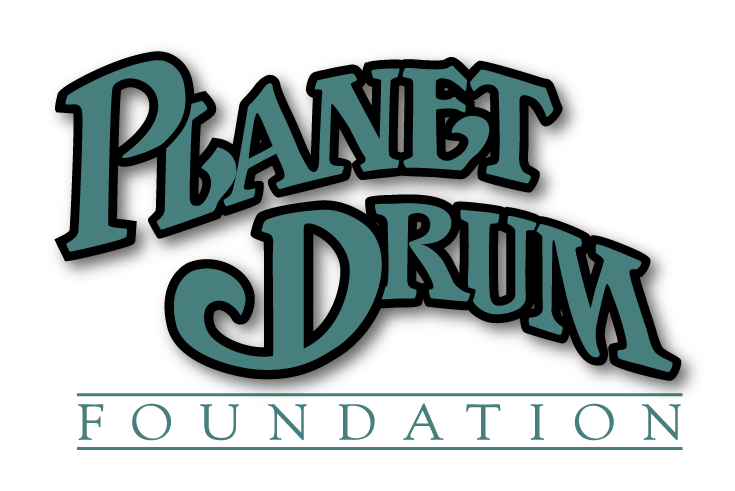Welcome to the Overview Page!
Jump to TIMELINES by decade and category of Planet drum’s activities. Click here for a very brief description of Planet Drum’s activities.
What is Planet Drum Foundation?
Planet Drum Foundation is a 501c3 ecological educational non-profit organization founded by Peter Berg in San Francisco in 1973. Its mission is to promote awareness of sustainable strategies for human inhabitation of the earth based on the bioregions where people live.
“We seek to enhance the intimate connection with life-places by spreading the ideas and activities of ‘living in place’ through publications, workshops, formal curricula, and hands-on demonstration projects. This work is motivated by our vision of a truly sustainable world in which humans are harmonious with and respectful of the natural environment.”
Planet Drum has been an innovative voice for bioregional sustainability, education and culture for 50 years. From its home in San Francisco it has undertaken international educational and organizing tours in North and South America, Europe, Japan, China, and Australia and from 1999-2021 maintained a highly successful program to assist transforming Bahía de Caráquez, Ecuador into an ecological city based on bioregional principles.
What is a bioregion? What is reinhabitation ?
bioregion [bio=life, region=place]
Planet Drum Foundation* developed the definition of a bioregion as a geographical area with coherent and interconnected plant and animal communities, and other natural characteristics (often defined by a watershed) plus the cultural values that humans have developed for living in harmony with these natural systems.
Because it is a cultural idea, the description of a specific bioregion uses information from both the natural sciences and other sources. Each bioregion is a whole “life-place” with unique requirements for human inhabitation so that it will not be disrupted and injured. People are counted as an integral aspect of a place’s life. As Peter Berg noted, “It is a geographic terrain and a terrain of consciousness.”
reinhabitation
Reinhabitation is a word coined by Berg in 1977. It “means learning to live-in-place in an area that has been disrupted and injured through past exploitation. It involves becoming native to a place through becoming aware of the particular ecological relationships that operate within and around it. It means understanding activities and evolving social behavior that will enrich the life of that place, restore its life-supporting systems, and establish an ecologically and socially sustainable pattern of existence within it.”
Where did Planet Drum come from?
The Planet Drum story begins in the mid 1960’s with the San Francisco Diggers, who espoused one of that period’s most radical and thoroughgoing visions of a new personal and social ideal. The Diggers began acting out a liberated lifestyle based on two principles: “Everything is free” and “Do your own thing.” A succinct description of the way people at that time felt trapped in industrial society appeared in a Digger free street sheet Peter Berg wrote titled Trip Without a Ticket.
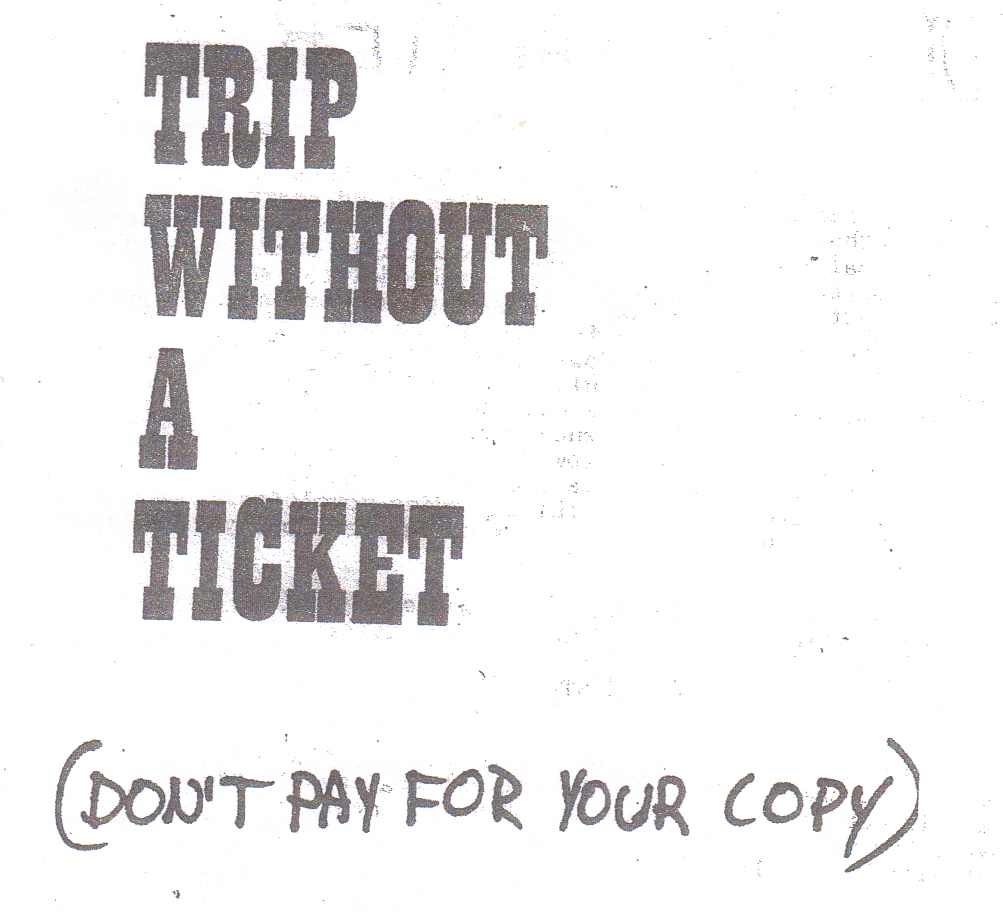
Although it was a few years before the environmental movement would emerge fully, Trip Without A Ticket already pointed in that direction as a new basis for social change: “Industrialization was a battle with 19th Century ecology to win breakfast at the cost of smog and insanity. Wars against ecology are suicidal.”
Participants in Digger street events were encouraged to explore postindustrial social possibilities by “creating the condition they describe” via Life-Acting. They also recognized the basic Planetary Celebrations of the Solstices and Equinoxes.
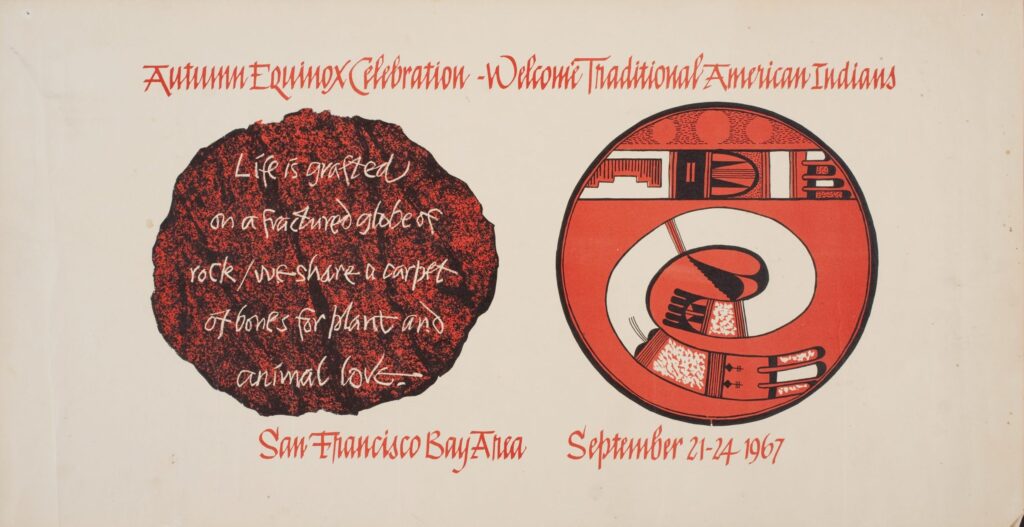
The last Digger free sheets were distributed in 1969, and, known as Planetedge Papers, expressed an ecological perspective more fully in essays and poster-size artwork. The Digger sense of everything being free had clearly shifted toward a focus on biospheric interdependence in Berg’s poem-essay Planetedge, which also points out the important distinction between the meanings of ‘planet’ and ‘world,’ and envisions a major transition in urban dwelling that eventually became manifest as Green City.
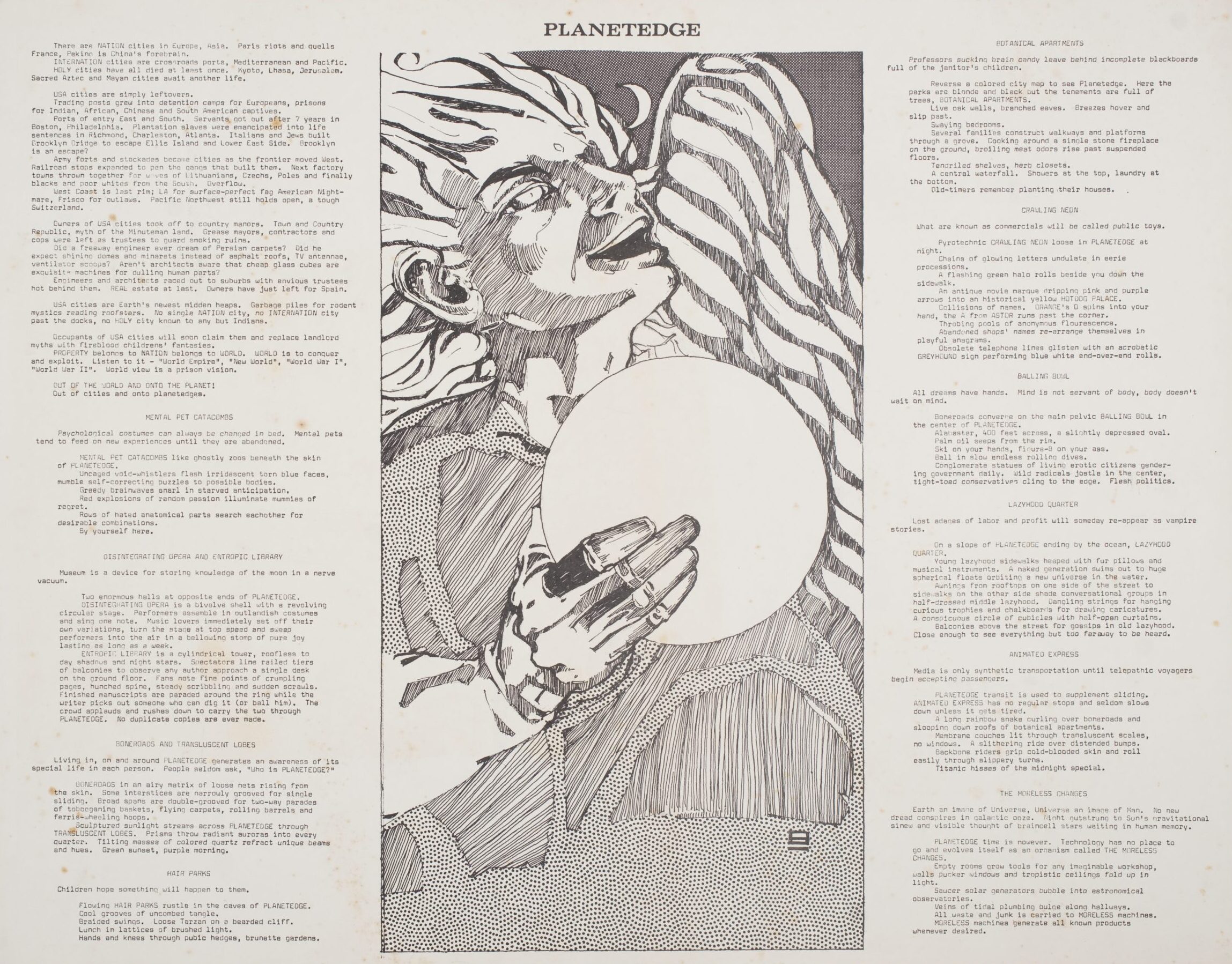
After the Summer Solstice 1968, the Diggers radiated out of the city. Peter’s essay Homeskin was a statement of vision and intent for this exodus. It expands what had been the Diggers’ mainly urban experiment to embrace the vast natural interdependence found in Earth’s biosphere. It was specifically written in 1970 as a handout for a caravan of trucks that had been individually modified to journey slowly across North America from west to east as a kind of reverse pioneer wagon train. Homeskin contains the initial statement of “ecographic regions” that eventually evolved into the concept of bioregions.
Planet Drum grew out of cross-country road trips Peter Berg and his partner Judy Goldhaft made. They initially traveled with the Digger caravan to Colorado; then continued across North America to seek out radical communities that had moved from cities back-to-the-land. Everywhere they traveled in 1971-72 they encountered new settler groups living adjacent to environmental disasters—clear-cutting of forests, toxic waste-spewing factories, plans to construct nuclear power plants, etc. Peter traveled with portable video equipment and made “video postcards” from and for the back-to-the-land communes they visited.
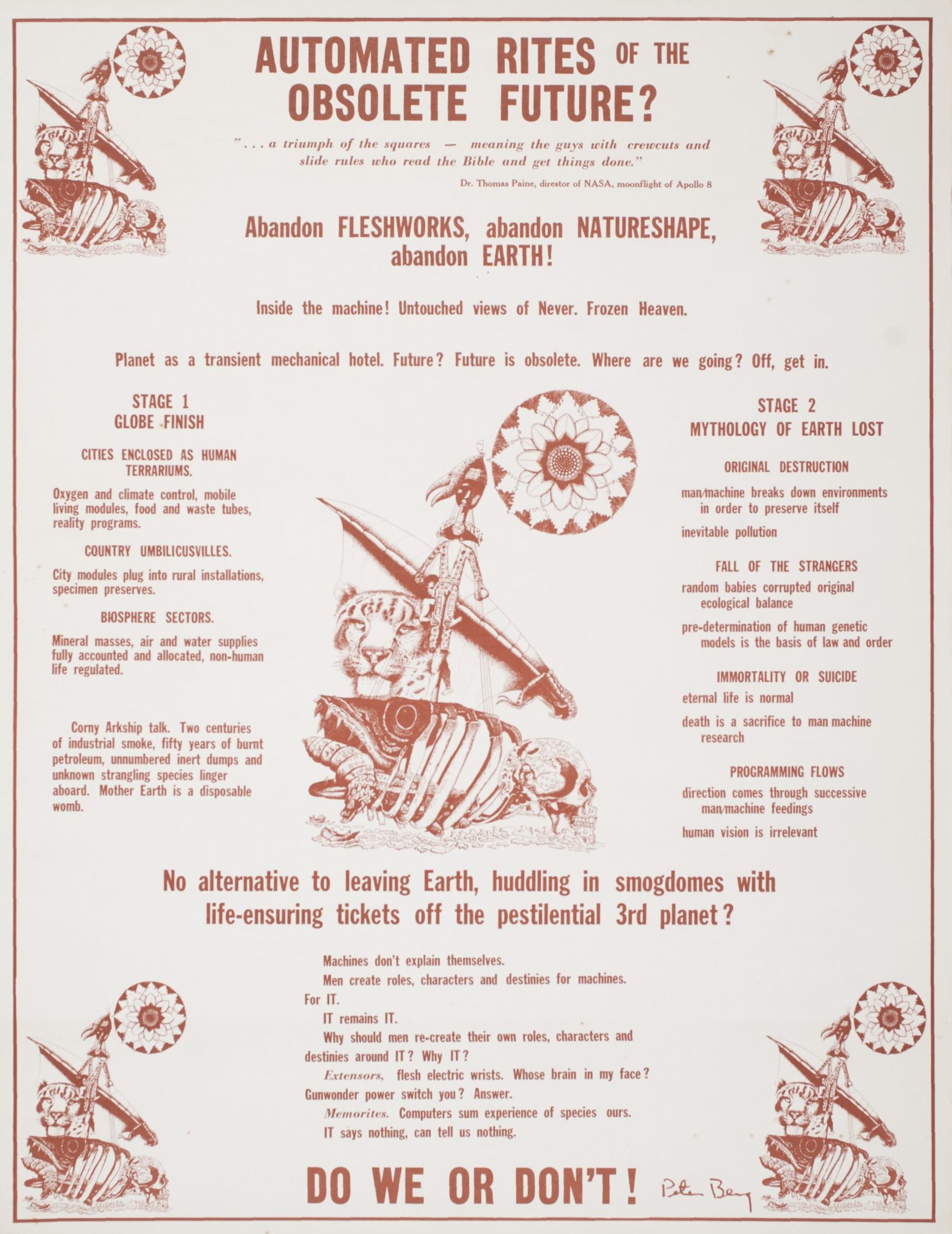
In May 1972 Berg attended the First United Nations Conference on the Environment in Stockholm, Sweden where he showed video footage in the lobby of the “UN Nations Conference” of the separate “Alternative Conference” and the people in the streets outraged by local ecological disasters who he termed “the planetariate.” He made a poster to hand out, Automated Rites of the Obsolete Future, that was intended to provoke UN attendees at the conference by sardonically advocating that the earth was unimportant compared to humankind’s possibilities through space travel. It addressed not only the tension between space exploration and biospheric identity, but also the limited ability of nations within the UN to solve planetary problems.
After the conference in Stockholm, Peter and Judy continued traveling back toward San Francisco. They returned to San Francisco in late 1972 and the next year Planet Drum began to emerge.
*Peter Berg, along with community activists and ecologists, developed and redefined the concept of a ‘bioregion’ for the 20th century. [‘bioregion’ was a 19th century biology term, Berg redefined it to include human society] The network of committed groups, new settlers and activists who had been contacted during the travels across the country became the foundation for what evolved into Planet Drum. The goal was to develop a place-located ecological philosophy and a movement to restore bioregions that could eventually replace the disinhabitory view of industrialism.
Planet Drum’s Early Activities and Projects 1973-1979: Bundles, Books, Frisco Bay Mussel Group, Reinhabitory Theater, Listening to the Earth Symposium.
Planet Drum Foundation’s earliest publications were “Bundles”—unbound collections of essays, maps, journals and other forms of expression, often about particular bioregions, contained in an envelope.
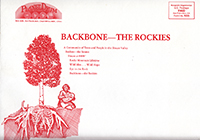
The Bundles were always produced in collaboration with local reinhabitants and became authentic tools for building bioregional awareness wherever they were assembled. Distributed free to Planet Drum’s network, they also informed a wider audience about what was being envisioned in particular places and inspired people to form their own bioregional groups and make Bundles for themselves.
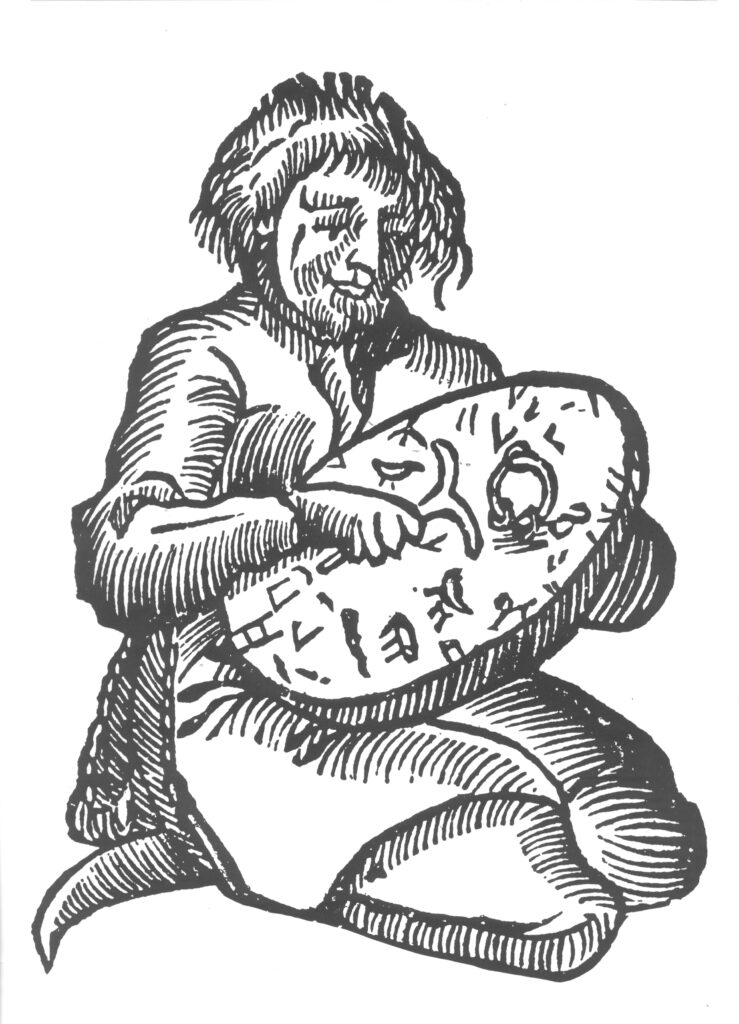
The pieces within a Bundle came unbound in an envelope—loose individual publications that were put into some suitable order by whoever opened it. Individual pieces could be given away or hung on the wall. Each reader was put in the position of a quasi-editor, somewhat similar to Planet Drum’s Sami shaman logo who is reading symbols from the head of a drum and putting them into an order.
In 1975 Planet Drum along with other San Francisco Bay Area activists formed a bioregional study group or “committee of correspondence” named the Frisco Bay Mussel Group. It met monthly and studied various aspects of Bay Area ecology and culture. The group published a map and booklet about the Bay Area, The Watershed Guide & Living Here in May of 1977.
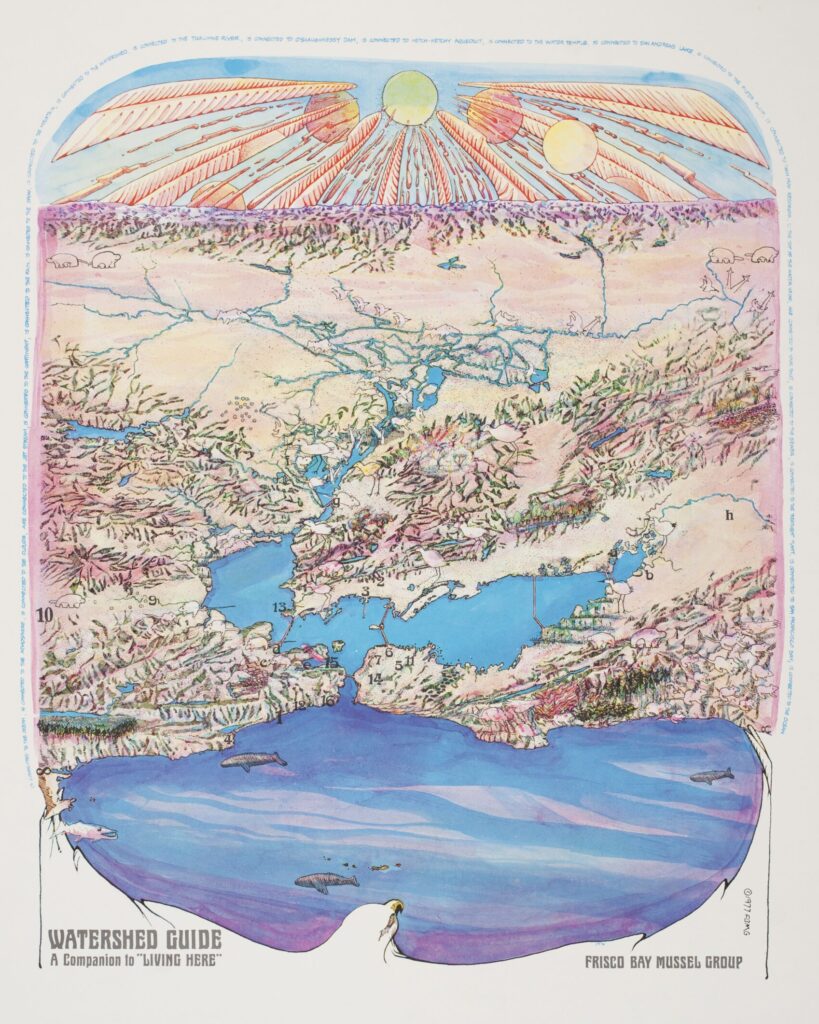
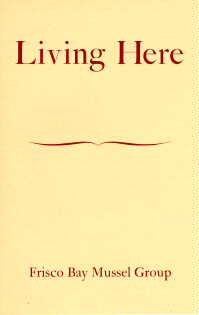
After discussions and research about water in the Bay Area, the Frisco Bay Mussel Group took out a full-page ad in the San Francisco Chronicle explaining the ecological implications building the Peripheral Canal would have on Northern California. The ad influenced voters and organizations to defeat the referendum.
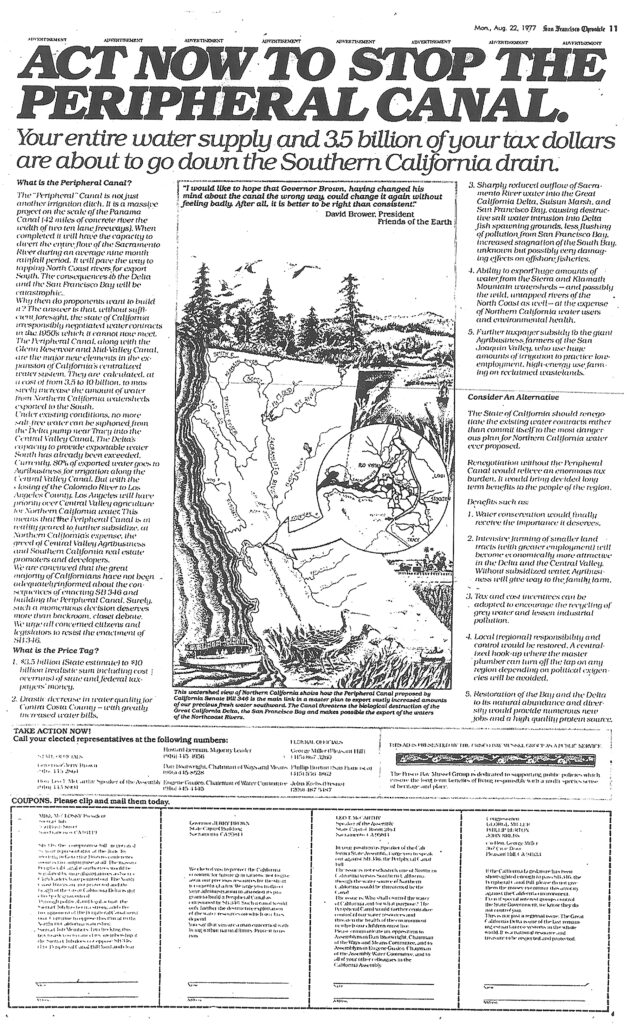
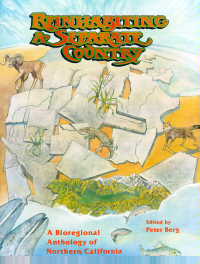
When Planet Drum began collecting material to make a “Northern California Bundle”, so much material was available that it didn’t fit into the Bundle format and was published in 1978 as the book, Reinhabiting a Separate Country, A Bioregional Anthology of Northern California.
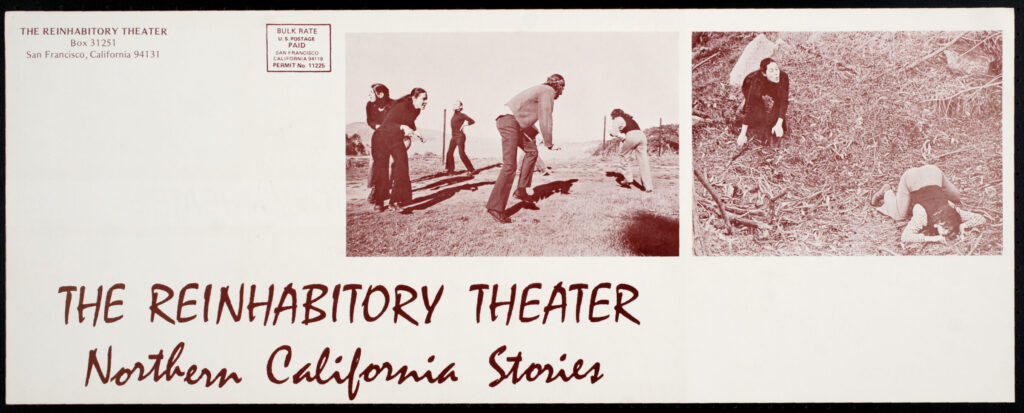
As Planet Drum was forming itself into a non-profit (mid to late 70s) the staff of Planet Drum, who had previously been theatrically active, began formulating a bioregionally oriented theater, The Reinhabitory Theater. The Theater performed Northern California Stories, a multispecies episodic cabaret style presentation of historic events that often included a post-performance workshop to celebrate the local place and engender and support community empowerment.
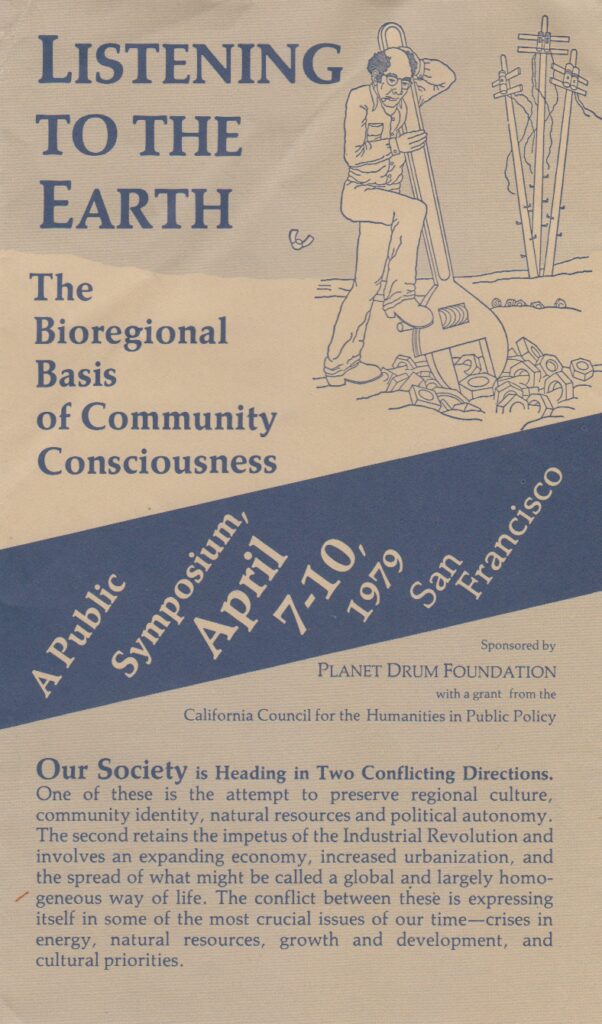
During April 7-10, 1979 Planet Drum Foundation sponsored a public symposium, Listening to the Earth: The Bioregional Basis of Community Consciousness, at the first Unitarian Church and Fort Mason in San Francisco. Leading environmental thinkers, representatives of government agencies, scholars in the humanities, innovators in alternative energy and agriculture, social critics, authors and indigenous thinkers presented, argued and interacted with the public for four glorious days.
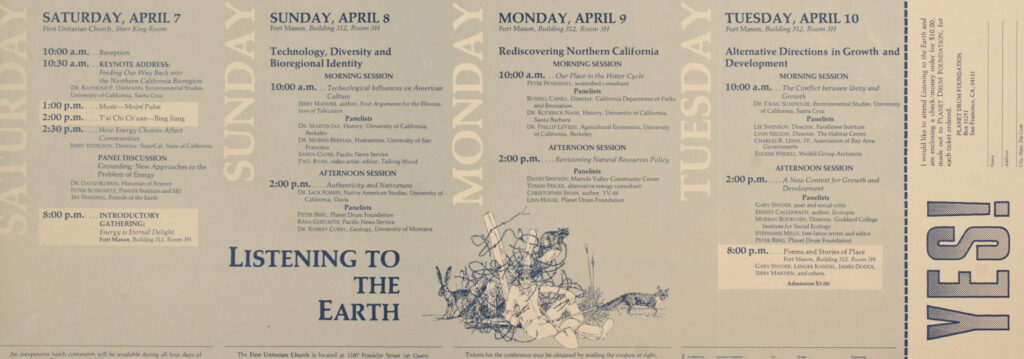
Planet Drum’s Activities and Projects during the 1980s-1990s: Raise the Stakes, The Green City Project, Shasta Bioregional Gatherings and the Bioregional Association of the Northern Americas.
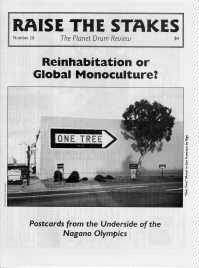
Planet Drum published 30 issues of the biannual Review Raise The Stakes from 1979-2000. Gary Snyder noted, “the periodical Raise the Stakes was of immeasurable importance in defining and disseminating the ideas and possibilities of bioregionalism.” Since then Planet Drum has continued to produce a smaller biannual newsletter, the Planet Drum PULSE .
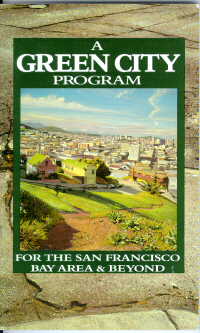
In the mid 1980s Planet Drum turned its attention to the influence urban areas hold on bioregions and organized a series of nine “Green City” symposia which brought together 150 educators, planners, government agencies, businesses, ecologists and activists to explore the possibilities for cities to become more sustainable and to develop visions and proposals for change in nine specific urban theme areas—Smart Transportation, Renewable Energy, Neighborhood Character and Empowerment, Recycling and Reuse, Celebrating Life-Place Vitality, Urban Wild Habitat. The collaborative suggestions of the participants were published in the book A Green City Program for the San Francisco Bay Area in 1989 and republished a year later in an expanded second edition, A Green City Program for the San Francisco Bay Area and Beyond.
The book was widely distributed and used in developing urban sustainability programs in San Francisco, around the U.S., and in other countries. The formation of the San Francisco Department of the Environment directly resulted from the book, as did Planet Drum Foundation’s Green City Project in the San Francisco Bay Area and The Eco-Ecuador Project in Bahía de Caráquez, Ecuador.
During the 1990s, Planet Drum Foundation’s Green City Project co-coordinated local activists in special events and supported urban sustainability with four areas of activities:
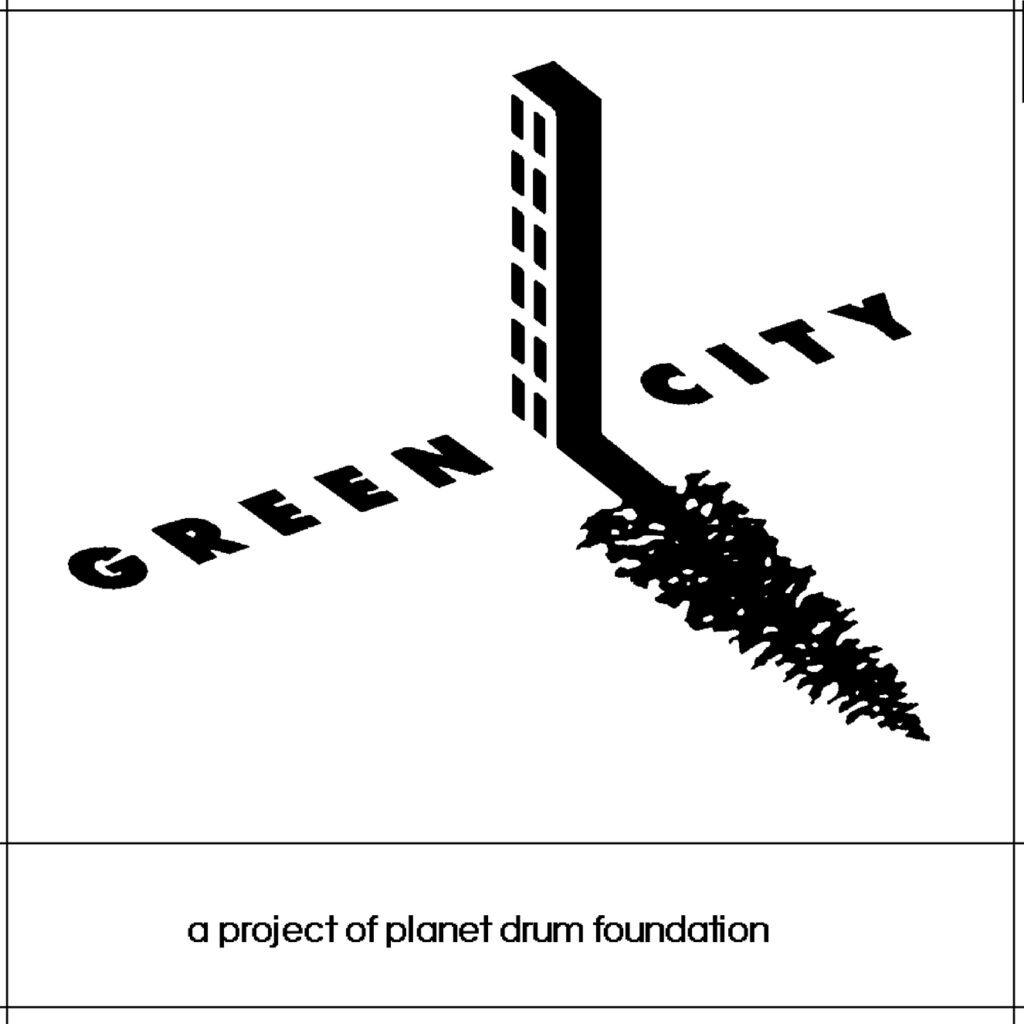
- The Volunteer Network database listed groups on every aspect of urban sustainability and served as a free information referral service;
- Education+Action (Education Plus Action) provided teachers with both educators and curricula for hands-on ecological classroom & service learning projects;
- Neighborhood Workshop/Workdays co-sponsored hands-on and educational workdays for adults in collaboration with a variety of organizations at Bay Area sites,
- The Green City Calendar, originally a quarterly printed publication, included both events in the San Francisco Bay Area and topical articles relating to urban sustainability. It is currently available online on this website, listing hands-on environmental/sustainable volunteer opportunities, classes, workshops, hikes, special events, and celebrations.
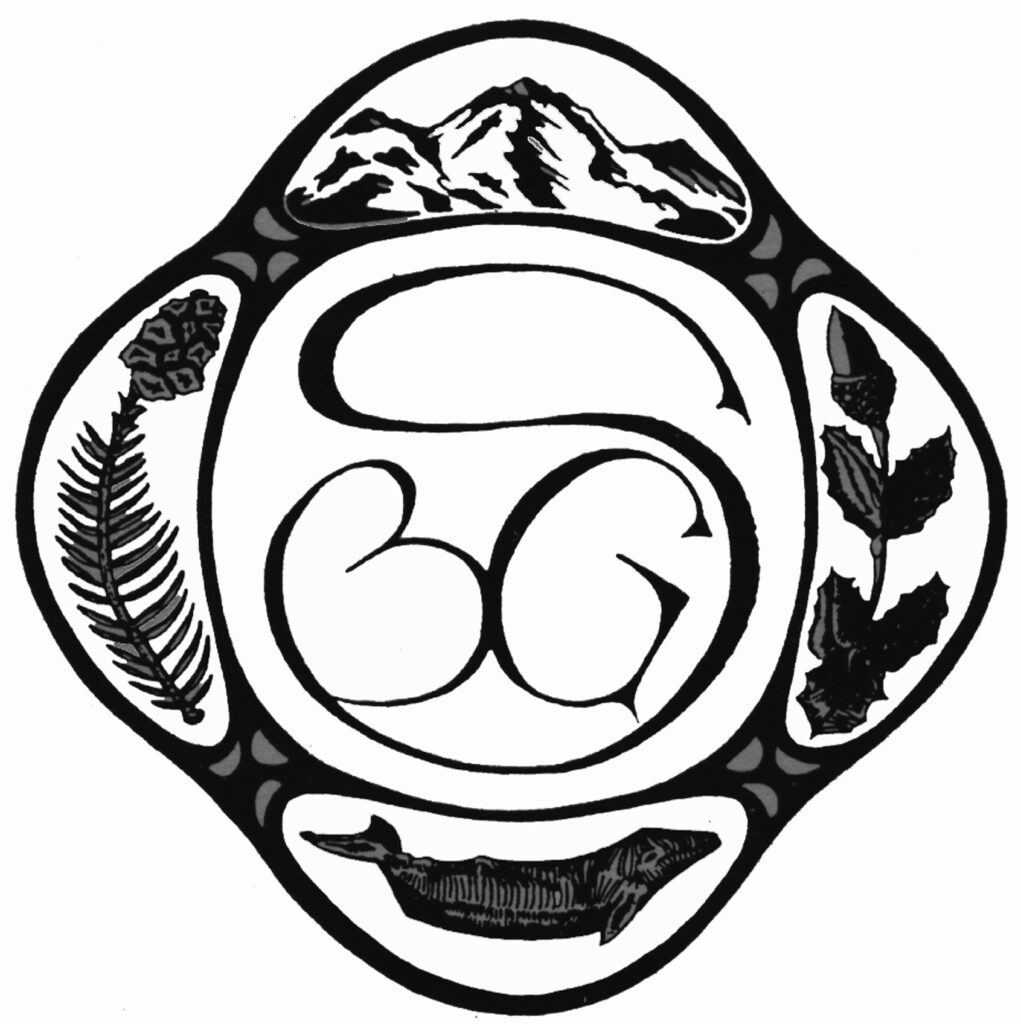
In 1991 Planet Drum held the first of five Shasta Bioregional Gatherings, where urban and rural activists met to exchange concerns and support each other. They were held in five different areas of Northern California. Crofton Diack, the first coordinator, described the event as, “Vastly different people coming from incredibly different walks of life doing hugely different things but finding common ground, talking, making plans for the future and really coming together—that’s what bioregionalism does through advocating a cultural relationship to the earth.”
In the mid-90s Planet Drum facilitated the development of a Bioregional Association of the Northern Americas to provide a forum for serious continental bioregional activities. The organization became a federal non-profit, published a monthly newsletter, Updates, and held member meeting. Unfortunately the organization fell prey to internal and external disputes, so the potentials for the group were not fulfilled. It didn’t survive into the 2000s.
Planet Drum’s Activities and Projects during the 2000s-2020s: The Eco-Ecuador Project, Guard Fox Watch and COP Reports
Planet Drum was invited to Bahía de Caráquez, Ecuador to collaborate on the development of an Eco-city initiative with local ecological activists and the city Mayor in 1999. The Eco-Ecuador Project maintained an office/apartment to support the ongoing Eco-city initiative and additionally developed and coordinated The Dry Tropical Forest Revegetation Project and Bioregional Education Programs. The Project worked with local and international volunteers and maintained a study abroad program for university students. This Project continued until 2021 when it closed due to complications from the COVID Pandemic.
Guard Fox Watch monitored and provided suggestions for making the winter Olympics more sustainable. Planet Drum first worked as part of Guard Fox Watch at the Nagano Winter Olympics in 1998. Subsequently, they developed guidelines for the Salt Lake City Winter Olympics in 2002 and helped organize a campaign to develop eco-consciousness in their planning. At the 2006 Winter Olympic Games in Turin, Italy Guard Fox Watch met with and offered suggestions to the organizing committee and monitored them and the 2010 Vancouver, Canada Olympics. The project maintains an archive of writings and suggestions for sustainability at the Winter Olympics on this website.
David Simpson is a long-time Northern California bioregional pioneer and community leader. Having written about and performed theater pieces with his partner Jane Lapiner on the subject of climate change in many places for several decades, they went to the UN Climate Conference of the Parties in 2009 (COP 15) in Copenhagen, Denmark to participate in whatever ways seemed appropriate. David and Jane’s impressions and reports from this and subsequent COPs were sent to Planet Drum to be distributed. They are laced with irony and wit and provide an invaluable overview of the evolution of the UN Climate Conferences. A section of this website is devoted to their reports.
Planet Drum continues working in the SF Bay area publishing periodicals and books; as well as producing events, presentations and workshops. There are openings for volunteers, interns and workers. Many of the items displayed on this website are available for sale in the bookstore.
<<<<—>>>>
TIMELINES
Planet Drum activities and projects BY DECADE
During the 1970s:
Production of six Bundles; Reinhabiting a Separate Country, a book, & a book party in the Vorpel Gallery; Reinhabitory Theater Performances with community empowerment workshops; Listening to the Earth, a three day symposium; Frisco Bay Mussel Group meetings, a Committee of Correspondance and bioregional study group that produced the Watershed Guide and its companion piece Living Here (map and booklet); and a full page ad in the San Francisco Chronicle opposing the Peripheral Canal.
When the AIM occupation of Wounded Knee occurred in 1973, Berg traveled there with his video camera to support and document their activities in South Dakota. His video, Dispatches from Wounded Knee received note although it was not credited to him. [Side note: Diggers had previously acted as support for the occupation action on Alcatraz Island.]
During the 1980s:
Two Bundles, 9 Green City Symposia, Publication of two books, one book party, Green City project initiated sponsored an early Green City Map, Theater Performance piece (Not for Tourists), sponsored and attended North American Bioregional Congress
During the 1990s:
- Gallery Show at Canessa Gallery
- Green City Project
- Volunteer Network & Database
- Green City Calendar publication
- E+A (Education Plus Action)
- Workshop/Workdays
- Rooftop gardens
- Bottlecap quilt
- Five Shasta Bioregional Gatherings
- Guard Fox Watch
During the 2000s
- Envisioning Sustainability book produced (with Subculture Books), one bundle produced,
- Eco-Ecuador Project: The Eco-Ecuador Green City project was initiated including Dry Tropical Forest revegetation, education with school children, and alternative energy projects.
- Guard Fox Watch
- COP Reports
During the 2010s
- Eco-Ecuador Project
- COP Reports
- The Biosphere and The Bioregion book produced,
- Workshop/workdays with interns,
- Presentations in Portland OR at Confluence event,
- Gallery show at the SF Main Library in the Wallace Stegner Environmental Center.
During the 2020s
- Walking tours of San Francisco with: David Schooley (2 walks-San Bruno Mountain); Judy Goldhaft (Islais Creek- Planet Drum Fdn.); Joel Pomeranz (Islais Creek Headwaters-Thinkwalks),
- Islais Creek watershed zoom presentation by Bonnie Ora Sherk
BY CATEGORY
Planet Drum Activities and Projects: Bundles
#1 1973
#2 1975
#3 1975 North Pacific Rim Alive
#4 1976 Continent Congress
#5 1977 Watershed Guide & Living Here
#6 1979 Backbone the Rockies
#7 1980 Renewable Energy & Bioregions: A new Context for Public Policy
#8 1982 Eco-Decentralist Design
#9 1985 Reinhabit the Hudson Estuary
#10 2004 Tonics for Disinhabitation
Planet Drum Activities and Projects: Publications—Books, Periodicals, Maps
- Production of a book: Reinhabiting a Separate Country, A Bioregional Anthology of Northern California © 1978
- Book Party at the Vorpel Gallery, San Francisco
- Production of a book: Devolutionary Notes © 1980
- Production of a book: A Green City Program for the San Francisco Bay Area © 1989
- Book Party at Fort Mason as well as readings in various bookstores around the U.S.
- Production of a book: A Green City Program for the San Francisco Bay Area and Beyond © 1990 with Wingbow Press
- Production of book Envisioning Sustainability with Subculture Books 2009–readings in various bookstores in San Francisco, Portland, Arcata, etc
- Production of book The Biosphere and The Bioregion with Routledge Press 2015
- Production of Periodical: Raise the Stakes(!) 1979-2000
- Production of Periodical: Voice of the Turtle
- Production of Shasta Map & Dasmann’s, “I am looking at a Picture of Home”
- Production of Periodical: Planet Drum PULSE 2001-the present
Planet Drum Activities and Projects: Events—Listening to the Earth: The Bioregional Basis of Community Consciousness (April 7-10, 1979), Celebrate the Longest Night (Dec 21, 1995?), Green City Symposia
- Production of a Conference: Listening to the Earth: The Bioregional Basis of Community Consciousness (April 7-10, 1979)
- Not For Tourists, a show that was performed on the way to the First North American Bioregional Congress in 1984, with planet Drum Staff and including Bob Carroll’s Salmon Show.
- Celebrate the Longest Night at the CA Academy of Sciences (performances, wine tasting, Bioregional food, Things that work exhibits) (Dec 21, 1985?)
- 9 Green City Symposia 1986-7?
- The first (partial) performance of Water Web by Judy Goldhaft was in 1989 in Anchorage, Alaska.
- Twenty fifth Birthday Party with Things that Work exhibits at Fort Mason Sept 25, 1993
Planet Drum Activities and Projects: Events—Shasta Bioregional Gatherings
There was a precursor to the Shasta Bioregional Gatherings—a small gathering of bioregionalsts and indigenous locals organized by Glenwood Bear in 1979 in Covelo, California at what had been The Hearthshire School ranch. It was held in the summer and spectacular dry lightning illuminated the event.
- 1991 ” Northern California Big Time!” Enchanted Hills Camp, Napa County
- 1992 “Building a Bioregional Culture” Shasta County
- 1994 Mendocino County
- 1995 Russian River, Sonoma County
- 1997 Patrick’s Point, Humboldt County
Planet Drum Activities and Projects: Events—Benefits
- Green City Project Benefit – at Patagonia with silent auction
- Recycled Art Fashion show Green City Project Benefit – Hayes Valley
- Party at Somarts Cultural Center (Geoff Hoyle performance, Eco-Ecuador presentation, raffle, music , art exhibit including Ecoart from students ) 10/25/2003
- Green City Project Benefit – at REI
- Patagonia Benefits
- Business presentations
- GC benefit
- Ecuador Benefit 20?? At Fort Mason
Planet Drum Activities and Projects: Sponsorships
- Sponsorship of Continental Bioregional Congresses/Gatherings 1984-present
- Sponsorship of a KAW
- Sponsorship of OACC
- Sponsorship of a Map: Wild in the City 1992
- sponsorship of Frankenfood parade Oct. 13. 2001
- Sponsorship of a Book & Game: Delta Primer 2003
- Sponsorship of Arte Papel (recycled paper products)
- Sponsorship of Upriver/Downriver (periodical) 198?-1992?
- Sponsorship of Islais Creek Watershed Presentation, on zoom by Bonnie Sherk , Living Library
- Sponsorship of Guard Fox Watch
- Sponsorship of Bioregional Reports from COP conferences by David Simpson and Jane Lapiner
Planet Drum Activities and Projects: Special Publications
- A Critique of Earthquake Reporting: Peter Berg interviews Jerry Mander about media and the earthquake 10/17/89
- Beautiful Tree, California Indians and Oaks 2005, a special supplement published by News From Native California distributed to California Planet Drum members.
- Revised Amble 1992
- Reinhabit the Hudson Estuary Bundle1985
- Coyote Magazine’s “Sonoran Desert Bioregion” issue
Planet Drum Activities and Projects: Events—Presentations
Planet Drum Activities and Projects: Events—Workshops
- Planet Drum Bioregional Ecology Workshop, An Introduction to San Francisco, June 2011
Planet Drum Activities and Projects: Events—Gallery Shows
- A Walkthrough of the book, Reinhabiting a Separate Country at the Vorpel Gallery 1978
- Planet Drum and Green City Project including music, Water Web performance and presentations at Canessa Gallery 1995
- Eco-Art Contest Winners Somarts Gallery, March 21, 1999
- Living Here, A Celebration of Bioregions Wallace Stegner Environmental Center, 5th Floor, San Francisco Main Library Sept-Nov. 2018
Planet Drum Activities and Projects: Bioregional Theater
- The Reinhabitory Theater: Northern California Stories 1975-1980(?)
- Not For Tourists 1984
- Human Nature
- Water Web 1989-2018(?)
